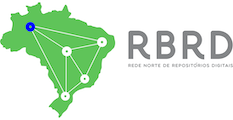It presents and reflects on the results of the study carried out at the Sectorial Library of the Southern Sector (BSSS), of the Federal University of Amazonas (UFAM) on the application of the principles of communicational accessibility to the care of deaf users by its Reference and Information Sector, in the period from 2021 to 2023. Its objective was to know the resources of communicational accessibility adopted by the Reference and Information Service of the BSSS, to infer the harmonization of the conditions of care given to its deaf users with the theoretical contributions of the legal and technical texts that deal with the subject. Regarding the methodological path adopted, about its objectives, the study was exploratory-descriptive, since it collected information to deepen the knowledge on the subject and described the resources of communication accessibility identified. Regarding the collection procedures, the study resorted to bibliographic and field research: in the first, the legal and technical texts that dealt with communication accessibility and the university library were identified; and in the second, through direct observation of the BSSS facilities, the communication accessibility resources used by the BSSS Reference and Information Sector to serve its deaf users were identified. Concerning the results, it was found that the BSSS studied follows the trend of other university libraries not using communication accessibility resources to receive and serve the deaf who are part of their community of potential users.
|
